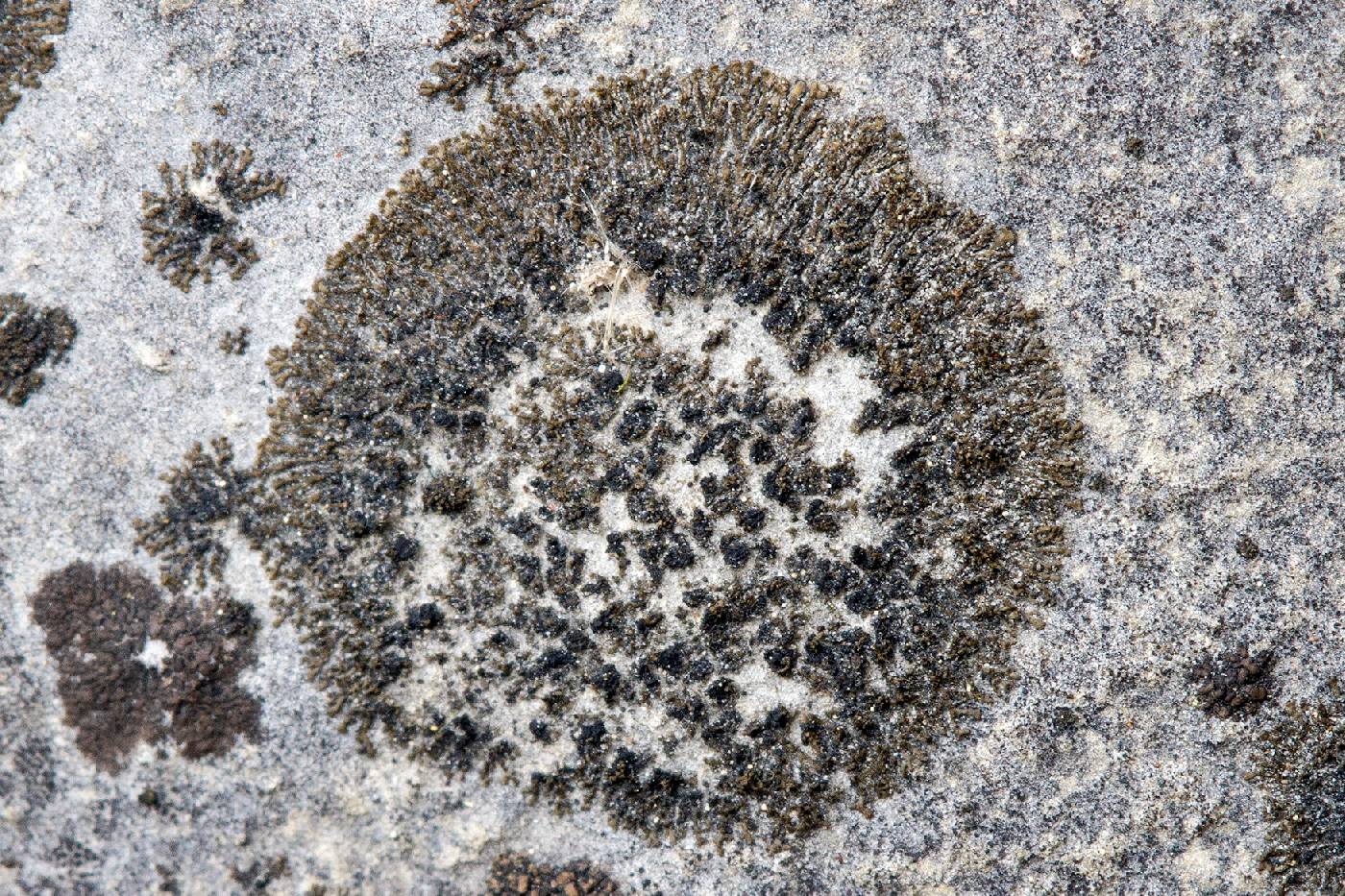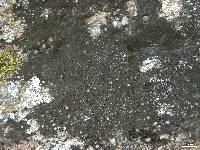
Consortium of Lichen Herbaria
- building a Global Consortium of Bryophytes and Lichens as keystones of cryptobiotic communities -
- Home
- Search
- Images
- Species Checklists
- US States: O-Z >
- US National Parks
- Central America
- South America
- US National Parks
- Southern Subpolar Region
|
|
|
|
Family: Placynthiaceae
[Pannaria stenophylla Tuck., moreParmeliella stenophylla (Tuck.) Zahlbr.] |
Nash, T.H., Ryan, B.D., Gries, C., Bungartz, F., (eds.) 2002. Lichen Flora of the Greater Sonoran Desert Region. Vol 1. Thallus: loosely attached, up to 1.5 cm across, forming small, stellate rosettes that become irregularly squamulose in the center, often dying off and forming arcs, lobate lobes: up to 3 mm long and 0.2 mm wide, upper surface: brownish, isidiate lower surface: pale, blackish, hypothallus absent Apothecia: not seen yet in var. isidiatum, in var. stenophyllum up to 0.4 mm wide; disc: reddish brown, with persisting thalline margin; exciple: thin, reduced to a few rows of cells; epihymenium: brown; hymenium: 70-80 µm high, amyloid; paraphyses: distinctly septate, sparingly branched, apical cells pointed or thickened; subhymenium: hyaline or slightly yellowish-brownish asci: 8-spored ascospores: 2-celled, hyaline, narrowly ellipsoid, sometimes curved, 12-15 (-20) x 3-5 µm; walls: thin Pycnidia: dark colored, immersed, laminal, up to 0.2 mm wide conidia: ellipsoid or bacilliform, sometimes slightly bent, hyaline, 4-6 x 1 µm Spot tests: all negative Secondary metabolites: none detected. Substrate and ecology: on vertical limestone cliffs and boulders in montane, moist habitats World distribution: North America Sonoran distribution: moist canyons in central Arizona and Chihuahua. Notes: Placynthium stenophyllum var. isidiatum differs from all other Sonoran Placynthium species in the lack of a black hypothallus and the loosely attached thallus. |
Powered by Symbiota

























